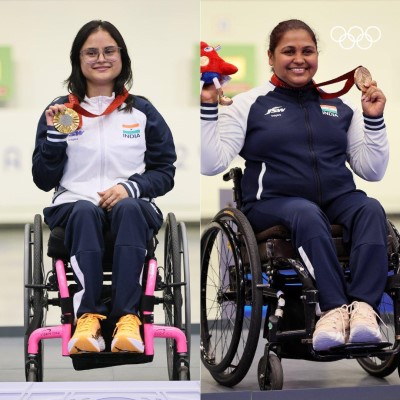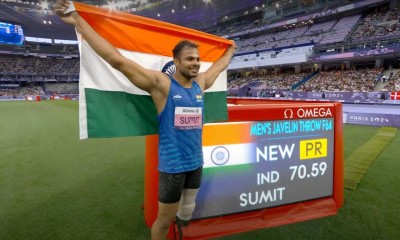
A country where generations of young people have grown up listening to their elders say, “Kheloge Kudoge Honge Kharab, Padhoge Likhoge Banoge Nawab” is sure to be no country with a culture for sports. That was indeed, the sad reality of India’s past. From official apathy towards athletes to lack to basic training facilities, India’s athletes were discouraged from picking sports as a serious career option due to such factors. However, the situation has changed tremendously over the past decade. From better facilities to train and job security by the Government, various measures have been taken at the Union Government level to ensure that sports is seen as a lucrative career option for those who are interested.
While we talk about the changing dynamics of the sports ecosystem in India, it is pertinent to know where we come from, the challenges that lay in front of the athletes and the system that did little to help them succeed at an international level.
The most obvious issue that athletes faced in India, was the mixing of politics in sports administration and the prevalence of nepotism. Sports federations across India became a den of corruption led by few families, who showed little to no interest in the development of sports. Moreover, people in positions of responsibility had their relatives take up their position after serving long tenures are the federations, making them their personal fiefdom. There have been instances where a single person would be involved in various federations, taking a toll on his efficiency and eventually on the administration of the federation.

Talking about long tenures at the helm of federations, the first name that comes to any Indian sports enthusiast’s mind, is that of Congress leader from West Bengal, Priya Ranjan Dasmunshi, who served as the president of the All India Football Federation for two decades starting 1988. One would wonder that with such a long tenure as the president, the state of football in India would have improved significantly. But was that the case? Certainly not.
Similarly, the Indian Amateur Boxing Federation too was led by INLD leader Abhay Singh Chautala. He had already served 12 years as the President of the Federation when the Constitution was amended to create a lifelong position for him. Due to such decision favoring an individual, the Federation was suspended by the International Boxing Federation.
On the part of the Government, there wasn’t an athlete centric approach, which could have enabled more people take up sports. The Department of Education would rarely interact with Department of Sports on matters pertaining to helping students who wish to pursue sports as a career. This lack of communication would result in lack of empathy on behalf of government officials towards young athletes. There was no institutional help whatsoever for those who reached national or international level.

The apathy of the Government extended even to those who brought laurels for the country in international competitions. In 2002 Manchester Commonwealth Games, Indian boxer from Kolkata Mohammed Ali Qamar won Gold in the Light flyweight category. The then Communist Party government in West Bengal promised him a plot of land for his efforts to bag the Gold for India, however, not only was he not provided any plot of land but he was also asked to pay ‘registration fees’ if he wanted the plot of land. Such was the neglect shown to our athletes in the past. Imagine if this was the behavior shown towards a gold medalist at Commonwealth, what would have happened to grassroots athletes making their way up and how many quality athletes we would have lost due to such government indifference?
All of these inefficiencies of the sports ecosystem meant that a sports culture in India could not develop that could have produced quality athletes and enabled world-class training facilities.
Realizing the need for a complete overhaul of the sports ecosystem of India, the Narendra Modi-led Government of India made sports an important cornerstone of PM Modi’s governance. The Government focused on creating a culture of sports and fitness while also focusing on providing international standard training facilities for the athletes. Some landmark schemes started by the Government of India that have immensely benefitted our athletes are Target Olympic Podium Scheme, Khelo India and Fit India. The success of these schemes lies in their efficient implementation.
Target Olympic Podium Scheme: Under this scheme that was launched in September 2014, the Sports Authority of India selects promising athletes with an aim to, as the name suggests, get a podium finish at the Olympics. In the last two Olympics, that is Tokyo 2020 (7 medals) and Paris 2024 (6 medals), each and every Indian athlete who has won a medal has been covered under TOPS. The motto of this scheme is ‘athlete-first’ whereby all training-related requirements of the athletes are supported and taken care of by the Government of India. This scheme is extended to the para-athletes as well, which has worked wonders for them. In the 2020 Paralympics, where the Indian para contingent won a record 19 medals, all our para-athletes were covered under TOPS. Among these 19 medals were 5 gold, 8 silver and 6 bronze. The Government of India, through the Sports Authority of India, provides Rs 50,000 out-of-pocket expenses for the athletes, which removes any burden of extra costs borne by the athlete while training. Any training or additional support that athletes would require while going abroad for training camps is taken care of by the Government of India, thereby providing the best possible institutional support to India’s international athletes. Under this scheme, the Government also supports the travel and stay of the athlete’s coaches and support staff, should the athlete ask for it. Such support has been unheard of in the past in India, and TOPS is now bearing fruit in terms of the number of medals India is winning at the Olympics.
Khelo India: For the purpose of identifying and nurturing grassroots talent, the Government of India brought the Khelo India Scheme in 2016. The Scheme was formulated after merging three existing schemes of the Government. These were Rajiv Gandhi Khel Abhiyan, Urban Sports Infrastructure Scheme and National Sports Talent Search Scheme.
This scheme has helped identify countless young, talented athletes from the hinterlands of India, who are now being given stipends and better training facilities to improve their game. The organisation of Khelo India Youth Games and University Games is helping the Government identify deserving athletes from across all states of India. These Games are organised in full media glare and the best facilities are provided to athletes to travel and stay during the games, thereby motivating them to keep working hard in their sport. These young athletes are trained under the Long Term Athlete Development Program for 8 years and are also provided a yearly assistance of Rs 5,00,000. The money is also a tremendous motivation for athletes, particularly those from a rural background for whom this sum would mean reducing excess costs incurred while training. This scheme too, is extended to the para-athletes.
The hallmark of the Khelo India scheme is that it promotes Indigenous sports such as mallakhamb, kalarippayattu, gatka, and thang ta. This initiative has started to reap good dividends as youngsters from various states are now picking up these traditional Indian sports as a career choice. Further, the Khelo India scheme also uses sports as a means of peace and development in Left-wing terror-affected states and Jammu and Kashmir. Special provisions have been made to ensure that such areas are covered under the scheme and youth are brought to the mainstream through sports.
Fit India: Launched in 2019, the Fit India scheme has grown by leaps and bounds to attract young people to a fit and healthy way of life. The movement aims to reach every school and college so that fitness becomes a way of life for young Indians. Many brand ambassadors and youth icons have been made part of this movement to encourage young Indians to eat healthy and stay fit. This is essentially a behavioural change that the Government of India wants to bring about in Indians to make fitness a way of life.
These three schemes and initiatives of the Government of India are turning the tide in the sports infrastructure of the country with institutional support from the Sports Authority of India. Earlier, there would be an elaborate, cumbersome procedure for the athletes to receive any kind of Government help, but now, the Government reaches the homes of deserving athletes to give them support in their sporting careers.
With 7 medals in the Tokyo Olympics and 6 medals at the Paris Olympics, India is surely headed into an era of unlimited opportunities for our athletes. There are no longer complaints for lack of government support or funding, which has now been addressed to the best possible extent, with the Prime Minister himself ensuring the overall well-being of Indian athletes. With continued institutional support and public backing, the day is not far when India will truly be a sports superpower, something that she was destined to be, but is realising only now
(This article was contributed by Sh. Ajay Kashyap on Sep 2024 for https://www.abvp.org/)